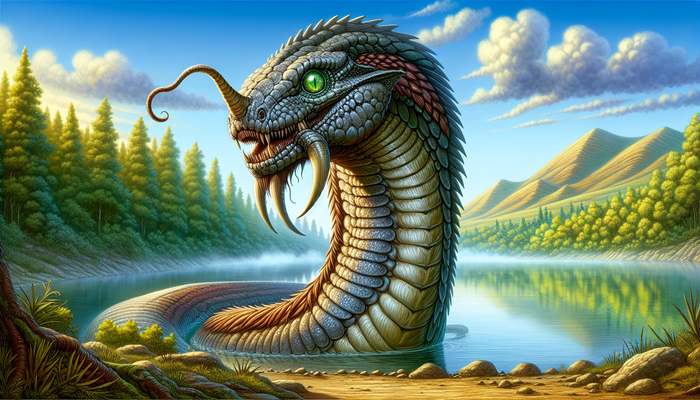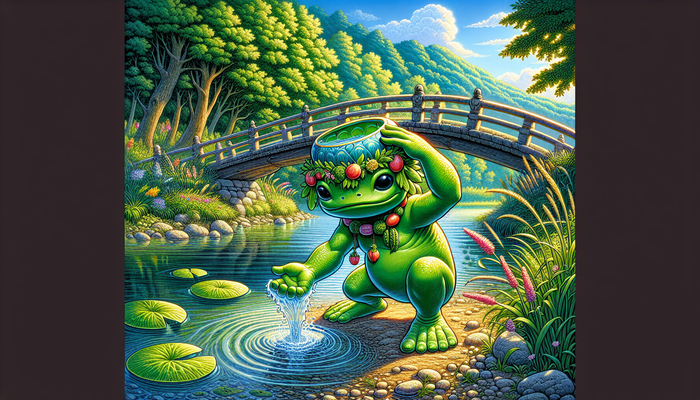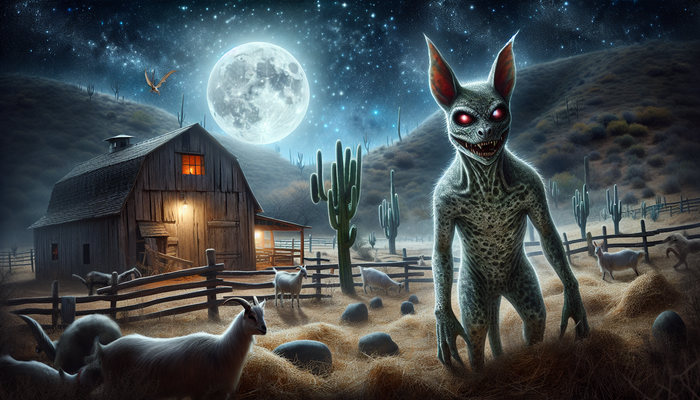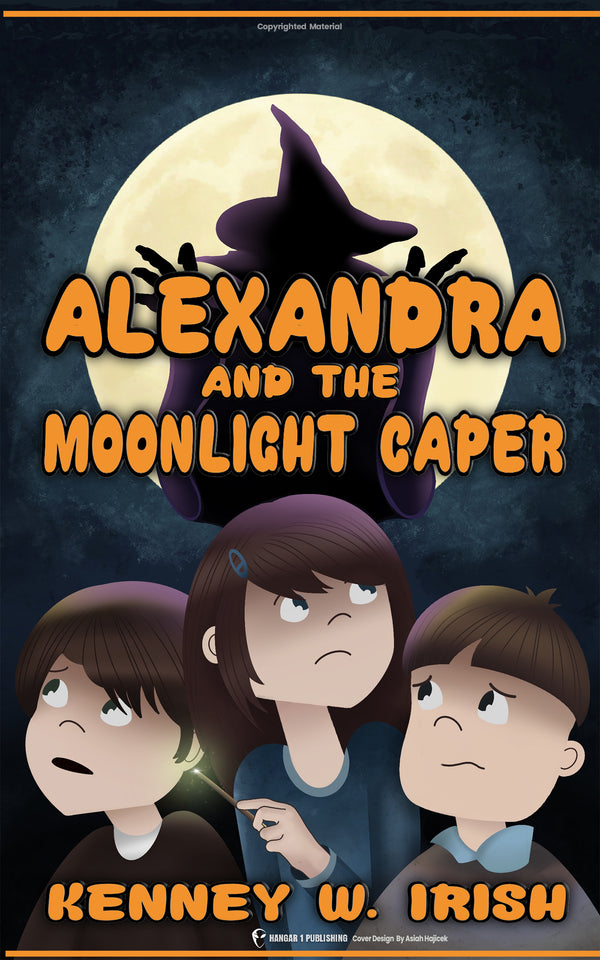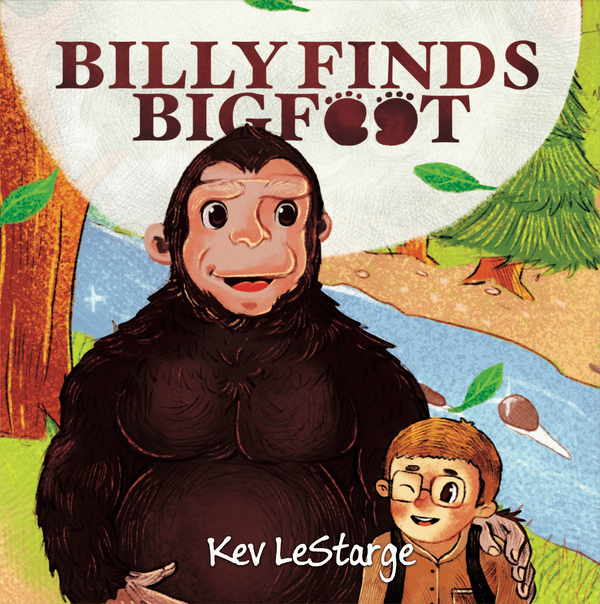The Black Shuck of East Anglia and Its Haunting Folklore
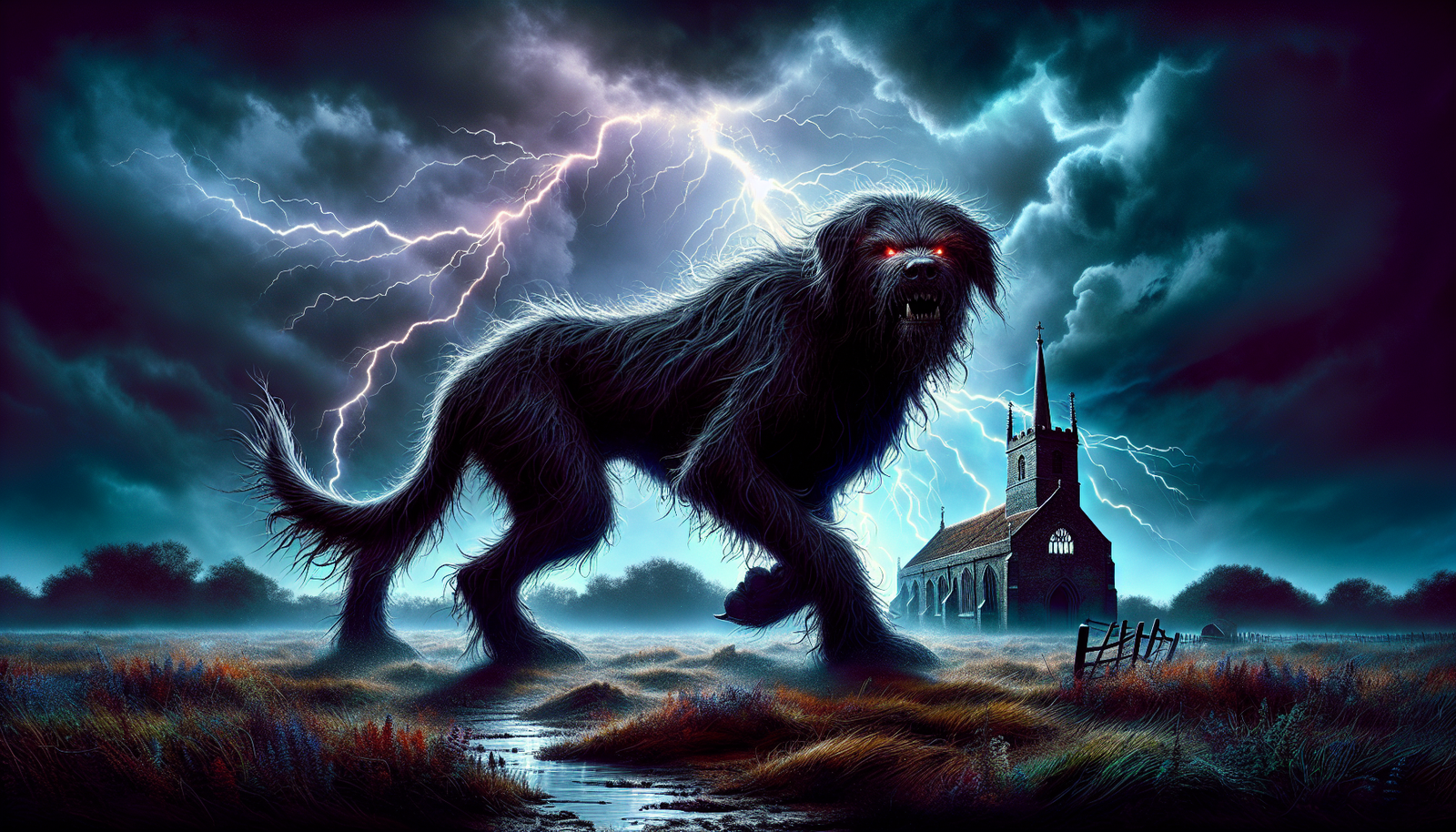
By Oliver Bennett, Cryptozoologist
As the mist rolls in from the North Sea, blanketing the windswept coastlines and ancient woodlands of East Anglia, one can almost hear the distant howl of a creature that has haunted these lands for centuries. In the shadowy realm between history and myth, where fact and fiction intertwine like gnarled branches in an old forest, there lurks a beast of such terrifying proportence that its very name sends shivers down the spines of those who know its tale. This is the domain of the Black Shuck, a spectral hound whose legend is as deeply rooted in the soil of East Anglia as the ancient oaks that dot its landscape.
The Black Shuck is no ordinary ghost story, no mere campfire tale to frighten children. It is a living legend, a creature that embodies the fears, hopes, and mysteries of generations of East Anglians. As a historian and folklorist, I have spent years delving into the archives, interviewing locals, and exploring the misty moors where the Shuck is said to roam. What I've uncovered is a tapestry of tales that weave together to form a creature of remarkable complexity – a being that is at once terrifying and awe-inspiring, malevolent and protective, a harbinger of doom and a guardian of the lost.
In this exploration, we will peel back the layers of myth and history to reveal the true nature of the Black Shuck. We'll trace its origins from the mists of time, examine the infamous incidents that cemented its place in East Anglian lore, and consider how this legend continues to shape the cultural landscape of the region to this day. From ancient chronicles to modern-day sightings, from folklore to archaeological discoveries, we will leave no stone unturned in our quest to understand this most enigmatic of spectral beasts.
As we embark on this journey, I invite you to open your mind to the possibilities that lie beyond the veil of the ordinary. For in the story of the Black Shuck, we find not just a tale of a ghostly dog, but a mirror reflecting our deepest fears, our connection to the land, and the enduring power of folklore to shape our understanding of the world around us. So gather close, dear reader, and let us venture into the shadows where the Black Shuck awaits, its fiery eyes gleaming in the darkness, ready to reveal its secrets to those brave enough to seek them out.
Origins of the Black Shuck Legend
The origins of the Black Shuck legend are as murky as the fens and marshes of East Anglia itself. To truly understand this spectral hound, we must first delve into the etymology of its name and the historical context that gave birth to such a fearsome creature in the collective imagination of the people.
Etymology of "Shuck"
The name "Shuck" itself is a linguistic puzzle that offers intriguing insights into the nature of the beast. Most scholars, myself included, believe that it derives from the Old English word "scucca," meaning "devil" or "fiend." This etymology immediately places the Black Shuck in the realm of the demonic, a creature to be feared and avoided at all costs. The very utterance of its name was likely enough to strike terror into the hearts of those who believed in its existence.
However, there is an alternative interpretation that speaks to the physical appearance of the beast. Some local linguists argue that "Shuck" may come from the dialect word "shucky," meaning "shaggy" or "hairy." This description aligns perfectly with the most common depictions of the Black Shuck as a large, shaggy black dog. The dual etymology perfectly encapsulates the dual nature of the Shuck itself – a creature that is both demonic in origin and bestial in appearance.
Historical Context
The historical context in which the Black Shuck legend emerged is equally fascinating. The earliest recorded mention of a spectral black dog in English folklore dates back to 1127, found in the Peterborough Chronicle, a version of the Anglo-Saxon Chronicle. This account describes a terrifying apparition of black huntsmen riding black horses and accompanied by black, demonic hounds. The chronicler writes:
"Let no-one be surprised at the truth of what we are about to relate, for it was common knowledge throughout the whole country that immediately after [Abbot Henry of Poitou's arrival at Peterborough Abbey] - it was the Sunday when they sing Exurge Quare - many men both saw and heard a great number of huntsmen hunting. The huntsmen were black, huge and hideous, and rode on black horses and on black he-goats and the hounds were jet black with eyes like saucers and horrible."
This account is particularly intriguing because it connects the Black Shuck to the wider European folklore of the Wild Hunt, a supernatural hunting party that was said to presage disaster or death. The association with the Wild Hunt places the Black Shuck within a broader context of Indo-European mythology, suggesting that its origins may be even more ancient than we initially suspected.
Similar Legends Across Britain
It's worth noting that the concept of spectral black dogs is not unique to East Anglia. Similar creatures appear in folklore across the British Isles and beyond:
- In Wales: the Gwyllgi or "Dog of Darkness"
- In northern England: the Barghest
- In the Isle of Man: the Moddey Dhoo
- In Germany: the Schwarze Hund
This widespread distribution of similar legends suggests that the Black Shuck may be tapping into a deep-seated, primal fear of large predatory animals that has been with humanity since our earliest days.
Evolution of the Legend
As Christianity spread across England, the pagan beliefs that likely gave birth to creatures like the Black Shuck were not entirely eradicated. Instead, they were often incorporated into Christian mythology, with the Shuck sometimes being seen as a minion of the Devil or a form of divine punishment. This syncretic approach allowed the legend to survive and evolve over the centuries, adapting to changing beliefs while retaining its core elements of fear and mystery.
The 16th century, a time of great religious and social upheaval in England, saw a resurgence of interest in supernatural phenomena. It was during this period that the Black Shuck truly cemented its place in East Anglian folklore, culminating in the infamous events of 1577 that would forever associate the beast with the churches of Bungay and Blythburgh.
The 1577 Incident: A Detailed Account
The year 1577 stands out in the annals of East Anglian folklore as the moment when the legend of the Black Shuck transcended mere campfire tales and rural superstition to become a matter of historical record. The events that unfolded on August 4th of that year in the Suffolk towns of Bungay and Blythburgh would forever cement the Black Shuck's reputation as a creature of terror and destruction.
Setting the Scene
To truly understand the impact of these events, we must first set the scene. The late 16th century was a time of great upheaval in England. The Protestant Reformation had turned the religious world upside down, and superstition still held great sway over the minds of the common people. It was a time when natural disasters and unexplained phenomena were often attributed to divine wrath or demonic intervention. Into this volatile atmosphere came a storm of such ferocity that it seemed to the people of Suffolk that the very heavens were declaring war upon the earth.
The Bungay Incident
On that fateful Sunday morning, the parishioners of St. Mary's Church in Bungay gathered for their weekly service, seeking solace and community in the face of the raging tempest outside. Little did they know that they were about to become witnesses to one of the most terrifying and inexplicable events in English folklore.
The most detailed account of what transpired comes to us from the Reverend Abraham Fleming, who published a pamphlet titled "A Straunge and Terrible Wunder" shortly after the incident. Fleming's account is worth quoting at length, as it provides a vivid and chilling description of the Black Shuck's appearance:
"This black dog, or the divel in such a likenesse (God hee knoweth al who worketh all,) running all along down the body of the church with great swiftnesse, and incredible haste, among the people, in a visible fourm and shape, passed between two persons, as they were kneeling uppon their knees, and occupied in prayer as it seemed, wrung the necks of them bothe at one instant clene backward, in somuch that even at a mome[n]t where they kneeled, they stra[n]gely dyed."
Fleming's account goes on to describe how the creature then attacked another man, "scratching him by the face and back, and tearing his flesh in a most fearful manner." The chaos that ensued can scarcely be imagined. Panic gripped the congregation as they fled in terror, many believing that the Day of Judgment had come upon them.
The Blythburgh Incident
But the Black Shuck's rampage was not confined to Bungay alone. On the very same day, some twelve miles away in the village of Blythburgh, a similar scene of horror unfolded at the Holy Trinity Church. Here, the great black dog is said to have burst through the doors of the church with a clap of thunder so mighty that it caused the church steeple to collapse. As in Bungay, death followed in the Shuck's wake. Two men were killed, their necks broken as the beast raced past them.
Physical Evidence
Perhaps the most enduring physical evidence of the Black Shuck's visit to Blythburgh can still be seen today. On the north door of the church, there are scorch marks that local legend attributes to the creature's claws. These marks, known as "the Devil's fingerprints," have become a point of pilgrimage for those interested in the Black Shuck legend, a tangible link to that terrifying day over four centuries ago.
Historical Debate
It's important to note that while Fleming's account is the most detailed we have of the 1577 incident, it is not without its critics. Some historians argue that Fleming, being a staunch Protestant, may have embellished or even fabricated parts of the story to serve as a moral warning against the perceived sinfulness of the times. Others point out that there are no contemporary church records that corroborate the deaths described in Fleming's account.
Impact on the Legend
However, what cannot be denied is the impact that this incident had on the popular imagination. The events of August 4, 1577, transformed the Black Shuck from a vague, shadowy presence in local folklore into a specific and terrifying entity. The details of its appearance – its massive size, its jet-black fur, its glowing eyes – became fixed in the public mind. The Shuck was no longer just a creature that might be glimpsed on lonely roads at night; it was now a force that could invade even the sanctity of a church, bringing death and destruction in its wake.
The timing of the incident is also significant. Coming as it did during a period of religious upheaval, the appearance of the Black Shuck in churches could be seen as a manifestation of the anxieties and fears of a population grappling with rapid change. Was the Shuck a punishment from God for the sins of the Reformation? Was it a demonic entity unleashed by the weakening of traditional religious practices? Or was it something older and more primal, a resurgence of pagan beliefs that Christianity had never fully suppressed?
Whatever the truth behind the 1577 incident, its effect on the Black Shuck legend cannot be overstated. It provided a focal point for all the fear and superstition that had long surrounded the creature, giving it a specific time and place in history. The details of the attack – the church setting, the violent deaths, the physical evidence left behind – would be repeated and embellished over the centuries, becoming the core of the Black Shuck myth as we know it today.
Descriptions and Characteristics of Black Shuck
The Black Shuck, like many creatures of folklore, is a being of myriad descriptions, its appearance and nature shifting and changing depending on who is telling the tale. Yet, through the centuries of sightings and stories, certain consistent characteristics have emerged, painting a picture of a beast that is as awe-inspiring as it is terrifying.
Physical Appearance
- Size: Enormous, often compared to a calf or even a horse
- Coat: Jet-black, often described as absorbing light
- Texture: Shaggy or unkempt
- Eyes: Glowing or blazing, usually red or yellow
- Eye Variation: Sometimes described as having a single, cyclops-like eye
Behavior and Movement
- Sound: Often silent, but with a terrifying howl when heard
- Movement: Can appear and disappear without warning
- Tracks: Often leaves no footprints
Associations
- Water: Frequently seen near coastlines, rivers, or in misty areas
- Weather: Often associated with storms and bad weather
- Omens: Traditionally seen as a harbinger of death or misfortune
Supernatural Abilities
- Shapeshifting: Some accounts suggest it can change size
- Intangibility: Described as both solid and ghostly
- Gaze: Looking into its eyes is said to bring death within a year
Dual Nature
One of the most intriguing aspects of the Black Shuck legend is its ambiguous nature. While many accounts portray the creature as a harbinger of death or misfortune, others present a more nuanced view. In some tales, the Shuck acts as a protector, guiding lost travelers home or warning people away from danger. This dual nature – at once terrifying and potentially benevolent – adds a layer of complexity to the Shuck that sets it apart from more straightforward monsters of folklore.
Regional Variations
While the Black Shuck is most commonly associated with East Anglia, similar black dog legends can be found throughout the British Isles and beyond. These include:
- The Barghest of Yorkshire
- The Gwyllgi of Wales
- The Cù Sìth of Scotland
This widespread distribution of black dog legends suggests that the Shuck may be tapping into a deep-seated, cross-cultural fear or archetype.
Cultural Significance and Symbolism
The Black Shuck is far more than just a ghostly dog that haunts the misty lanes and windswept coastlines of East Anglia. Over the centuries, it has evolved into a powerful symbol, a creature that embodies the fears, hopes, and identity of the region.
Icon of East Anglian Identity
The Black Shuck has become an integral part of East Anglian cultural identity. Examples include:
- Incorporation into local heraldry and civic symbols
- Prominent feature on Bungay's coat of arms
- Use in branding for local businesses, from pubs to craft beers
- Inspiration for local festivals and events
Symbolic Significance
- Life and Death: Represents the intersection of mortality and the unknown
- Liminality: Embodies the blurring of boundaries between natural and supernatural
- Duality: Reflects complex human relationships with death and the unknown
- Canine Symbolism: Taps into our deep-rooted relationship with dogs
- Religious Symbolism: Challenges notions of safety and sanctuary in holy places
Anthropological Perspective
The Black Shuck legend serves several cultural functions:
- Processing collective anxieties
- Personifying natural forces and dangers
- Maintaining oral traditions and communal storytelling
- Connecting people across generations through shared cultural touchstones
Modern Significance
- Symbol of local heritage and cultural continuity
- Subject of academic study in folklore and anthropology
- Attraction for tourism and local economy
- Continued evolution and adaptation to modern contexts
Modern Sightings and Encounters
Despite the passage of centuries and the advent of scientific rationalism, the legend of the Black Shuck remains very much alive in East Anglia. Sightings and encounters with this spectral hound have continued well into the 20th and even 21st centuries.
Notable Modern Sightings
-
1972 Gorleston Sighting:
- Reported by Graham Grant, a coastguard officer
- Observed a large black hound-type animal on the beach
- Creature vanished after two minutes of observation
-
1980s Wisbech Encounter:
- Reported by a woman walking with her young son
- Described a large black dog with glowing yellow eyes
- Creature kept pace with them before vanishing
Common Themes in Modern Sightings
- Sudden appearance and disappearance
- Unnaturally large size
- Glowing eyes
- Less emphasis on death omen aspect
Technology and the Black Shuck
- Reports of the creature appearing in photographs or videos
- Increased speculation about capturing proof with modern technology
- Challenges in verifying accounts and separating genuine experiences from hoaxes
The Internet's Impact on the Legend
- Online forums and social media spreading the legend
- Digital platforms allowing for rapid dissemination of new sightings
- Challenges in verifying online accounts
Cryptozoological Interpretations
Some researchers have suggested the Black Shuck might be:
- A surviving prehistoric species
- A remnant population of dire wolves
- An unknown large canid species
Psychological and Cultural Factors
- Power of suggestion and cultural conditioning
- Pareidolia and the brain's tendency to seek patterns
- Enduring appeal of the supernatural in modern culture
Changing Perceptions
- Some modern encounters reported as positive or awe-inspiring experiences
- Shift towards urban and suburban sighting locations
- Emergence of Black Shuck tourism and guided "ghost walks"
The Archaeological Discovery
In May 2014, an unexpected archaeological discovery brought the legend of the Black Shuck into direct contact with scientific inquiry.
The Discovery
- Location: Ruins of Leiston Abbey, Suffolk
- Discovered by: DigVentures archaeological team
- Find: Skeletal remains of an unusually large dog
Details of the Find
- Burial depth: Approximately 20 inches
- Location within site: Among the ruins of the abbey's kitchen area
- Carbon dating: Between 16th and 18th centuries
- Estimated size of dog: 7 feet tall on hind legs, weighing around 200 pounds
Significance of the Location
- Proximity to Bungay and Blythburgh, sites of the 1577 Black Shuck incidents
- Alignment with timeframe of famous Black Shuck legends
Media Response
- Widespread coverage in local and national media
- Sensational headlines linking the find to the Black Shuck legend
- Demonstration of the legend's enduring power to capture public imagination
Scientific Analysis
- Likely a very large domestic canine, possibly a mastiff or Great Dane
- Evidence of arthritis, suggesting the dog lived to an old age
- Careful burial indicating it was a valued animal
Impact on the Black Shuck Legend
While the scientific community remains cautious about linking the find directly to the Black Shuck legend, the discovery has:
- Reignited interest in the Black Shuck folklore
- Prompted discussions about the intersection of legend and archaeological evidence
- Demonstrated the ongoing relevance of folklore in modern scientific and cultural discourse
From Bigfoot to UFOs: Hangar 1 Publishing Has You Covered!
Explore Untold Stories: Venture into the world of UFOs, cryptids, Bigfoot, and beyond. Every story is a journey into the extraordinary.
Immersive Book Technology: Experience real videos, sights, and sounds within our books. Its not just reading; its an adventure.



